Emergency services
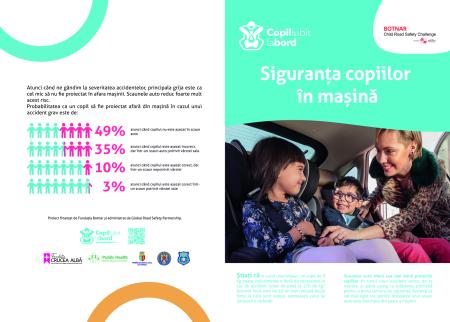
Thursday, June 16, 2022
One in three children observed in Cluj-Napoca were not wearing any type of restraint compared with, for example a study of 2 652 children in Belgium that found one in five were wearing no restraints. The rates of using restraint in the back seat of a car are generally low in European countries, Romania having the lowest rate of at only 26% (Pan-European Survey Main Results, 2015). The rate of children injured in car crashes and not wearing any type of restraint is high in Cluj-Napoca; police records show that half of the children involved in car crashes were not restraint at the time of the crash, which increases the likelihood of severe injuries and worsen outcomes of crashes.
Injuries, including road traffic injuries, account for 21% of the childhood deaths (0-19 years) in Romania (Mackay & Vincenten, 2012). Specific research conducted in Cluj-Napoca shows that road traffic safety for children should be a concern. A study looking at child patients who suffered head injuries and sought care at Children’s Emergency Hospital Cluj-Napoca (2008-2010), identified that children who suffered a head injury as a consequence of road traffic crash were almost five times more likely to require advanced care (OR: 4.97; 3.09-8.06) than being released (Rus D, Chereches R, Peek-Asa C, et al. 2016). Our data shows that the proportion of parents who used a safety restraint for their children is much lower than reported in most high-income countries. For example, in Australia and the United States of America the proportion of child occupants in restraints is reported as 90% and, 86% (Peden, et al., 2014), respectively, while in Austria, in 2014, the child restraint use rate was almost 99% (Austrian Road Safety Fund, 2014). Child restraint systems are the best way to protect children as passengers in a car, and currently Romania has a specific legislation to foresee the correct use of child safety restraints (CSR), but to our knowledge, no specific programs have been implemented at the local level to increase correct CSR use by increasing the enforcement of the existing legislation.
In line with the EU regulations, the Romanian Traffic Code was changed in September 2014 to include penalties for drivers who do not secure underage passengers with seatbelt or child safety restraints. Further modifications were enacted in 2015, requiring that children under the age of three or whose height does not exceed 135 cm should travel in a child safety seat, while older children should use seatbelts appropriately adjusted for their weight and height.
All these requirements were implemented at the request of DIRECTIVE 2014/37/EU on use of safety belts and child restraint systems in vehicles. The project will focus on correct use of CSR using evidence-based strategies, documented at local level by the proposed academic partners and in line with the prevention strategies set in the Decade for Action on Road Safety 2011-2020 of the WHO and its’ subsequent 10 prevention strategies targeting children.
Data collected as part of an observational study (2013-2014) shows that in Cluj-Napoca, one third (32.6%) of child passengers between the ages of 0-17 were not wearing any type of restraints when observed (Rus, 2015; Rus, Peek-Asa, Jurchis, & Chereches, 2016). The rates of non-restraints increased with age, children older than five years being less likely to be restraint when travelling in a car (Rus, 2015). Additionally, a qualitative study was conducted to further explore parents’ perceptions, behaviours and decisions regarding the use of child safety restraints in Cluj-Napoca (2016). In this second study, parents acknowledged the role of police officers in education and raising awareness among two groups: parents and children.
Police officers were perceived as key stakeholders in education on road traffic safety Police data. Cluj County Police Data (2015-2016) shows that more than 300 children between the ages of 0 and 3 were involved in a road traffic crash as car passengers. In 2015, 322 children under the age of 3 were involved in a road traffic crash as car passengers, out of which 148 (45.9%) were not wearing any type of restraint. The percentage was almost the same for 2016, 159 (45.2%) out of 352, children under the age of 3 involved in road traffic crash as car passengers were not wearing any type of restraints.
Injuries, including road traffic injuries, account for 21% of the childhood deaths (0-19 years) in Romania (Mackay & Vincenten, 2012). Specific research conducted in Cluj-Napoca shows that road traffic safety for children should be a concern. A study looking at child patients who suffered head injuries and sought care at Children’s Emergency Hospital Cluj-Napoca (2008-2010), identified that children who suffered a head injury as a consequence of road traffic crash were almost five times more likely to require advanced care (OR: 4.97; 3.09-8.06) than being released (Rus D, Chereches R, Peek-Asa C, et al. 2016). Our data shows that the proportion of parents who used a safety restraint for their children is much lower than reported in most high-income countries. For example, in Australia and the United States of America the proportion of child occupants in restraints is reported as 90% and, 86% (Peden, et al., 2014), respectively, while in Austria, in 2014, the child restraint use rate was almost 99% (Austrian Road Safety Fund, 2014). Child restraint systems are the best way to protect children as passengers in a car, and currently Romania has a specific legislation to foresee the correct use of child safety restraints (CSR), but to our knowledge, no specific programs have been implemented at the local level to increase correct CSR use by increasing the enforcement of the existing legislation.
In line with the EU regulations, the Romanian Traffic Code was changed in September 2014 to include penalties for drivers who do not secure underage passengers with seatbelt or child safety restraints. Further modifications were enacted in 2015, requiring that children under the age of three or whose height does not exceed 135 cm should travel in a child safety seat, while older children should use seatbelts appropriately adjusted for their weight and height.
All these requirements were implemented at the request of DIRECTIVE 2014/37/EU on use of safety belts and child restraint systems in vehicles. The project will focus on correct use of CSR using evidence-based strategies, documented at local level by the proposed academic partners and in line with the prevention strategies set in the Decade for Action on Road Safety 2011-2020 of the WHO and its’ subsequent 10 prevention strategies targeting children.
Data collected as part of an observational study (2013-2014) shows that in Cluj-Napoca, one third (32.6%) of child passengers between the ages of 0-17 were not wearing any type of restraints when observed (Rus, 2015; Rus, Peek-Asa, Jurchis, & Chereches, 2016). The rates of non-restraints increased with age, children older than five years being less likely to be restraint when travelling in a car (Rus, 2015). Additionally, a qualitative study was conducted to further explore parents’ perceptions, behaviours and decisions regarding the use of child safety restraints in Cluj-Napoca (2016). In this second study, parents acknowledged the role of police officers in education and raising awareness among two groups: parents and children.
Police officers were perceived as key stakeholders in education on road traffic safety Police data. Cluj County Police Data (2015-2016) shows that more than 300 children between the ages of 0 and 3 were involved in a road traffic crash as car passengers. In 2015, 322 children under the age of 3 were involved in a road traffic crash as car passengers, out of which 148 (45.9%) were not wearing any type of restraint. The percentage was almost the same for 2016, 159 (45.2%) out of 352, children under the age of 3 involved in road traffic crash as car passengers were not wearing any type of restraints.
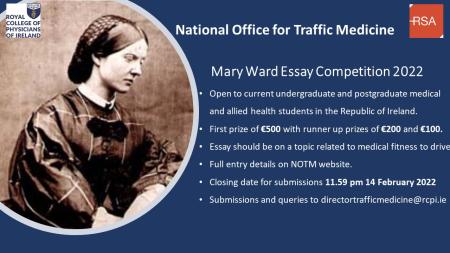
Wednesday, June 8, 2022
There is increasing awareness that medical fitness to drive - the impact of many medical conditions on fitness to drive - is a neglected aspect of road safety, particularly as there is evidence that appropriate medical advice can reduce crashes (1). We have shown in this project that medical fitness to drive is neglected in medical training (2) and also in a ground-breaking study that the general population show impaired awareness of medical fitness to drive (3). Our project aims to rectify this with wide-ranging activities to improve awareness among healthcare professionals and the general population, working with the Irish Road Safety Authority and the National Driving Licence Service.
1. https://www.nejm.org/doi/10.1056/NEJMsa1114310
2. https://journals.sagepub.com/doi/abs/10.4997/jrcpe.2020.322
3. https://www.tandfonline.com/doi/abs/10.1080/15389588.2020.1766684
1. https://www.nejm.org/doi/10.1056/NEJMsa1114310
2. https://journals.sagepub.com/doi/abs/10.4997/jrcpe.2020.322
3. https://www.tandfonline.com/doi/abs/10.1080/15389588.2020.1766684
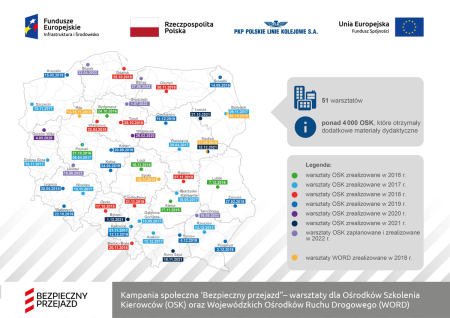
Monday, June 6, 2022
Every year, ca. 200 accidents and collisions happen on the Polish railroad crossings, leading to dozens of deaths. 99% of these incidents are a result of the drivers’ recklessness and their non-compliance with the rules. Therefore, state-owned Polish Railway Lines launched a social educational campaign: “Safe rail-road level crossing” aimed at increasing the drivers’ awareness. Campaign was focused on shortening the reaction time of emergency services by using an innovative solution of Yellow Sticker and educating the right behaviours widely in the Polish society thru Ambassadors of Safety.
85% of Poles declare that they do not always comply with the traffic rules…
Rush, ignorance, recklessness and lack of rationality are the main killers on the railway’s tracks in Poland. Research shows that general knowledge about safety on railway’s tracks and rail-road crossings in Poland is too low. Drivers routinely disregard the STOP sign, light signals or pass below the closing barriers. The problem concerns both regular and professional drivers. Many of them don’t know what to do if their vehicle gets stuck between the closed barriers. They can’t determine the place, whom to contact and what to do. They are not aware that they can contact the services by using the Yellow Sticker.
Therefore Polish Railway Lines under “Safe rail-road level crossing” campaign, implemented actions aimed at reaching the general public with information about railroad crossing safety rules and functioning of Yellow Sticker.
85% of Poles declare that they do not always comply with the traffic rules…
Rush, ignorance, recklessness and lack of rationality are the main killers on the railway’s tracks in Poland. Research shows that general knowledge about safety on railway’s tracks and rail-road crossings in Poland is too low. Drivers routinely disregard the STOP sign, light signals or pass below the closing barriers. The problem concerns both regular and professional drivers. Many of them don’t know what to do if their vehicle gets stuck between the closed barriers. They can’t determine the place, whom to contact and what to do. They are not aware that they can contact the services by using the Yellow Sticker.
Therefore Polish Railway Lines under “Safe rail-road level crossing” campaign, implemented actions aimed at reaching the general public with information about railroad crossing safety rules and functioning of Yellow Sticker.
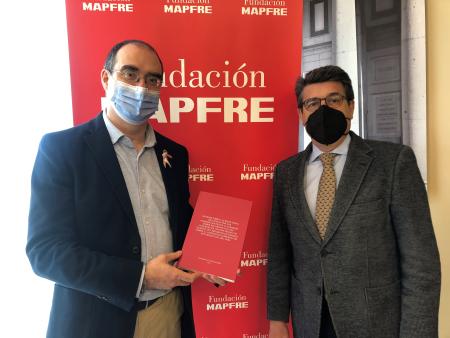
Monday, June 6, 2022
La Comisión sobre Seguridad Vial del Congreso de los Diputados es el único órgano político español en el que están representados todos los partidos políticos con representación parlamentaria y su actividad fundamental es impulsar nuevas estrategias y acciones para conseguir el objetivo de reducir la siniestralidad vial en España. Colaboramos con la Administración y recibimos las propuestas de la sociedad civil.
Nuestro objetivo es el cumplimiento de la Estrategia 2030, en las que nos fijamos la reducción de la siniestralidad y personas fallecidas y lesionados graves en un 50% Y la reducción total (visión cero) para 2050.
Nuestro objetivo es el cumplimiento de la Estrategia 2030, en las que nos fijamos la reducción de la siniestralidad y personas fallecidas y lesionados graves en un 50% Y la reducción total (visión cero) para 2050.

Monday, June 6, 2022
The technology can’t avoid all kind of road accidents. So, we focus in creating the “Life Saver Seat” solution to make the rescue of victims faster and more save. We reduced the rescue time by 70%, and thus reduced the number of road victims by 50%!!
The problem during the rescue process is: ( https://youtu.be/0mTHRy25Mq8 )
- to have in place all the rescue material needed
- to have enough space to work in the correct way
The E-RESCUE System transforms a normal seat into a "Life Saver Seat": ( https://youtu.be/nXhPvz6Y9VY )
- In every seat there is all that is needed to immobilize the victims against the backrest to protect his back (preventing spinal cord injuries) and the special removable anchorage system makes it possible to remove the seat from the vehicle and extract the victim with it.
- this is the first time that we install in vehicles a safety system focused on making the rescue of the victims easier after a crash... it is not only a new safety device, but also a new kind of safety onboard call "Post-Accident Safety".
The problem during the rescue process is: ( https://youtu.be/0mTHRy25Mq8 )
- to have in place all the rescue material needed
- to have enough space to work in the correct way
The E-RESCUE System transforms a normal seat into a "Life Saver Seat": ( https://youtu.be/nXhPvz6Y9VY )
- In every seat there is all that is needed to immobilize the victims against the backrest to protect his back (preventing spinal cord injuries) and the special removable anchorage system makes it possible to remove the seat from the vehicle and extract the victim with it.
- this is the first time that we install in vehicles a safety system focused on making the rescue of the victims easier after a crash... it is not only a new safety device, but also a new kind of safety onboard call "Post-Accident Safety".

Monday, June 6, 2022
The technology can’t avoid all kind of road accidents. So, we focus in creating the “Life Saver Seat” solution to make fast and saver the rescue of victims. We reduce by 70% the rescue time thus reducing by 50% the number of road victims !!
The problem during the rescue process is: ( https://youtu.be/0mTHRy25Mq8 )
- to have in place all the rescue material needed
- to have enough space to work right.
The E-RESCUE System transform a normal seat into a "Life Saver Seat": ( https://youtu.be/nXhPvz6Y9VY )
- In every seat there is all it is needed to immobilize the victims against it backrest to protect his back (preventing spinal cord injuries) and the special removable anchorage system makes possible to remove seat from the vehicle and extract the victim with it.
- this is the first time that we install in vehicles a safety system focused in making easier the rescue of the victims after a crash... is not only new safety device, but also a new kind of safety onboard call "Post-Accidente Safety".
The problem during the rescue process is: ( https://youtu.be/0mTHRy25Mq8 )
- to have in place all the rescue material needed
- to have enough space to work right.
The E-RESCUE System transform a normal seat into a "Life Saver Seat": ( https://youtu.be/nXhPvz6Y9VY )
- In every seat there is all it is needed to immobilize the victims against it backrest to protect his back (preventing spinal cord injuries) and the special removable anchorage system makes possible to remove seat from the vehicle and extract the victim with it.
- this is the first time that we install in vehicles a safety system focused in making easier the rescue of the victims after a crash... is not only new safety device, but also a new kind of safety onboard call "Post-Accidente Safety".

Monday, June 6, 2022
Desde su constitución en el año 2016, Netun Solutions centra su actividad en el desarrollo de soluciones tecnológicas orientadas a la mejora de la seguridad vial en las carreteras de todo el mundo. El principal reto al que ha dedicado sus esfuerzos es la reducción de las víctimas de atropello, así como la mejora en los tiempos y calidad de la asistencia en situaciones de auxilio vial.
Se detecta que la parada de un vehículo en la vía debido a una emergencia, los operarios ejerciendo trabajos de mantenimiento, los usuarios vulnerables (ciclistas) y los vehículos lentos constituyen un riesgo para la circulación. Los tradicionales sistemas de señalización no ofrecen una protección adecuada, sobre todo en condiciones de baja visibilidad debido a la falta de percepción real efectiva de los vehículos cuando quedan parados en la vía, lo que puede derivar en nuevos accidentes. Además, carecen de sistemas de geolocalización que puedan determinar y comunicar la situación del obstáculo.
Según las propias palabras de Pere Navarro, Director de la Dirección General de Tráfico española (DGT), “Un 20% de las muertes en autopistas y autovías se produjo por atropello a gente que bajó del vehículo o que estaba trabajando”.
Si bien las cifras de atropellos en las carreteras españolas son difíciles de clasificar, una aproximación realizada por el Centro de Estudios Ponle Freno-AXA indica que el 50% de los fallecidos por atropello lo son durante las maniobras de señalización posteriores a una parada. Sin ir más lejos el balance de siniestralidad vial del verano de 2021 publicado recientemente por el Ministerio del Interior español recoge que de los 10 fallecidos en autopistas y autovías, tres de ellos murieron al ser atropellados tras descender de su vehículo por distintos motivos. Mientras en el caso de los 13 fallecidos en carreteras convencionales, tres fueron atropellados tras abandonar su vehículo. Otros estudios hablan de más de un centenar de personas fallecidas en España mientras trabajan en la carretera, de ellas la mitad eran operarios de conservación y mantenimiento de las mismas.
Hasta 2021, los sistemas actuales de señalización eran ineficientes, no anteponían la seguridad de los ocupantes al vehículo, no daban soluciones eficaces a usuarios vulnerables como los operarios de la vía ni se aprovechaban las nuevas tecnologías disponibles para solventar esta situación.
Con todo ello, el principal reto de Netun Solutions ha sido el diseño de una solución universal que permita la señalización y/o geolocalización inmediata de los agentes de la vía y su distribución a las autoridades de tráfico y otros agentes implicados.
Para hacer frente a este nuevo desafío se ha desarrollado en Netun Solutions un portfolio de productos capaces de conectarse a DGT 3.0, la plataforma española de movilidad inteligente, entre ellos, cabe destacar:
- Help Flash IoT: primera baliza V16 conectada a través de tecnología NB-IoT.
- Dispositivo V2 conectado: baliza profesional geolocalizada para vehículos lentos y de trasnporte especial.
- Dispositivo de geolocalización personal individual. Geolocaliza a los operarios de conservación mientras hacen sus labores de mantenimiento en la vía.
- Cono inteligente: cono geolocalizado que indica la posición de un tramo en obras o mantenimiento.
Se detecta que la parada de un vehículo en la vía debido a una emergencia, los operarios ejerciendo trabajos de mantenimiento, los usuarios vulnerables (ciclistas) y los vehículos lentos constituyen un riesgo para la circulación. Los tradicionales sistemas de señalización no ofrecen una protección adecuada, sobre todo en condiciones de baja visibilidad debido a la falta de percepción real efectiva de los vehículos cuando quedan parados en la vía, lo que puede derivar en nuevos accidentes. Además, carecen de sistemas de geolocalización que puedan determinar y comunicar la situación del obstáculo.
Según las propias palabras de Pere Navarro, Director de la Dirección General de Tráfico española (DGT), “Un 20% de las muertes en autopistas y autovías se produjo por atropello a gente que bajó del vehículo o que estaba trabajando”.
Si bien las cifras de atropellos en las carreteras españolas son difíciles de clasificar, una aproximación realizada por el Centro de Estudios Ponle Freno-AXA indica que el 50% de los fallecidos por atropello lo son durante las maniobras de señalización posteriores a una parada. Sin ir más lejos el balance de siniestralidad vial del verano de 2021 publicado recientemente por el Ministerio del Interior español recoge que de los 10 fallecidos en autopistas y autovías, tres de ellos murieron al ser atropellados tras descender de su vehículo por distintos motivos. Mientras en el caso de los 13 fallecidos en carreteras convencionales, tres fueron atropellados tras abandonar su vehículo. Otros estudios hablan de más de un centenar de personas fallecidas en España mientras trabajan en la carretera, de ellas la mitad eran operarios de conservación y mantenimiento de las mismas.
Hasta 2021, los sistemas actuales de señalización eran ineficientes, no anteponían la seguridad de los ocupantes al vehículo, no daban soluciones eficaces a usuarios vulnerables como los operarios de la vía ni se aprovechaban las nuevas tecnologías disponibles para solventar esta situación.
Con todo ello, el principal reto de Netun Solutions ha sido el diseño de una solución universal que permita la señalización y/o geolocalización inmediata de los agentes de la vía y su distribución a las autoridades de tráfico y otros agentes implicados.
Para hacer frente a este nuevo desafío se ha desarrollado en Netun Solutions un portfolio de productos capaces de conectarse a DGT 3.0, la plataforma española de movilidad inteligente, entre ellos, cabe destacar:
- Help Flash IoT: primera baliza V16 conectada a través de tecnología NB-IoT.
- Dispositivo V2 conectado: baliza profesional geolocalizada para vehículos lentos y de trasnporte especial.
- Dispositivo de geolocalización personal individual. Geolocaliza a los operarios de conservación mientras hacen sus labores de mantenimiento en la vía.
- Cono inteligente: cono geolocalizado que indica la posición de un tramo en obras o mantenimiento.
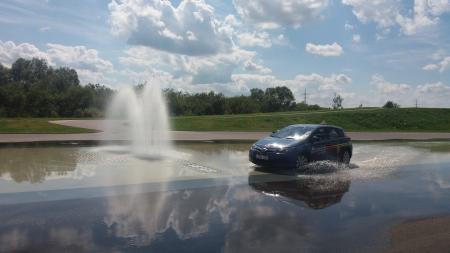
Sunday, June 5, 2022
Few problems appear in Additional driver training program which is held in Lithuania for novice drivers and drivers whose license was suspended in case of hard traffic violation:
- the practical driving lesson is ineffective in terms of educating safe driving
- legal collision: drivers with suspended license drive in public traffic during the lesson
- restrictions and risks of pandemy have set the limitations of traditional practical driving
- the practical driving lesson is ineffective in terms of educating safe driving
- legal collision: drivers with suspended license drive in public traffic during the lesson
- restrictions and risks of pandemy have set the limitations of traditional practical driving
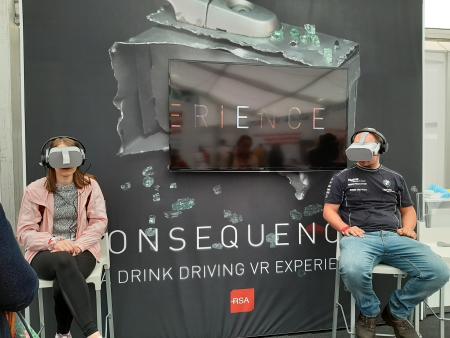
Thursday, June 2, 2022
Data collected by the Road Safety Authority showed that there had been a resurgence in drink driving in Ireland. A legacy of historical anti-drink driving advertising had reduced the behaviour, but a new cohort of younger people, who have never been exposed to it, were drinking and driving anew.
The RSA Education Manager was tasked with creating a campaign to help reduce this worrying trend against an audience—younger adult males—who considered themselves invincible and immune to road traffic collisions. No matter how strong the RSA’s messaging, there was still an issue in young males and peer pressure.
The key objective was to reduce the prospect of drink-driving amongst this younger cohort. We wanted to get under the audience’s skin, using a tech-appropriate medium, and make sure they had an experience they would never forget: one that would change how they think and importantly, how they behave.
One of the problems faced by every road safety body is that the consequences of drink driving are abstract to people that have never felt them. It’s hard to imagine losing your licence, ending up in prison, killing someone, or being left with permanent disabilities because most of us have never experienced these things. We can logically understand them, but we don’t feel them. For the first time, using Virtual Reality, we could create a shocking and deeply resonant immersive experience and make these consequences feel real.
The RSA Education Manager was tasked with creating a campaign to help reduce this worrying trend against an audience—younger adult males—who considered themselves invincible and immune to road traffic collisions. No matter how strong the RSA’s messaging, there was still an issue in young males and peer pressure.
The key objective was to reduce the prospect of drink-driving amongst this younger cohort. We wanted to get under the audience’s skin, using a tech-appropriate medium, and make sure they had an experience they would never forget: one that would change how they think and importantly, how they behave.
One of the problems faced by every road safety body is that the consequences of drink driving are abstract to people that have never felt them. It’s hard to imagine losing your licence, ending up in prison, killing someone, or being left with permanent disabilities because most of us have never experienced these things. We can logically understand them, but we don’t feel them. For the first time, using Virtual Reality, we could create a shocking and deeply resonant immersive experience and make these consequences feel real.
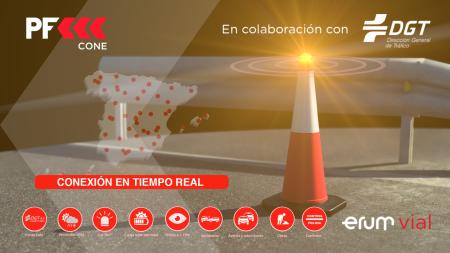
Monday, May 30, 2022
Connecting our devices "PF LED ONE and PF CONE" to Motor For Transport Department in Spain (DGT) , Communications Service Provider and our server. Comply with DGT Legislation and Service Provider requirements. Lack of legislation within EU countries regarding the use of portable Road Safety "connected " beacons and cones. When activated, our products provide instant geolocation to; vehicles that have suffered an incident/accident, national control centres that supervise road works and hazard zones.